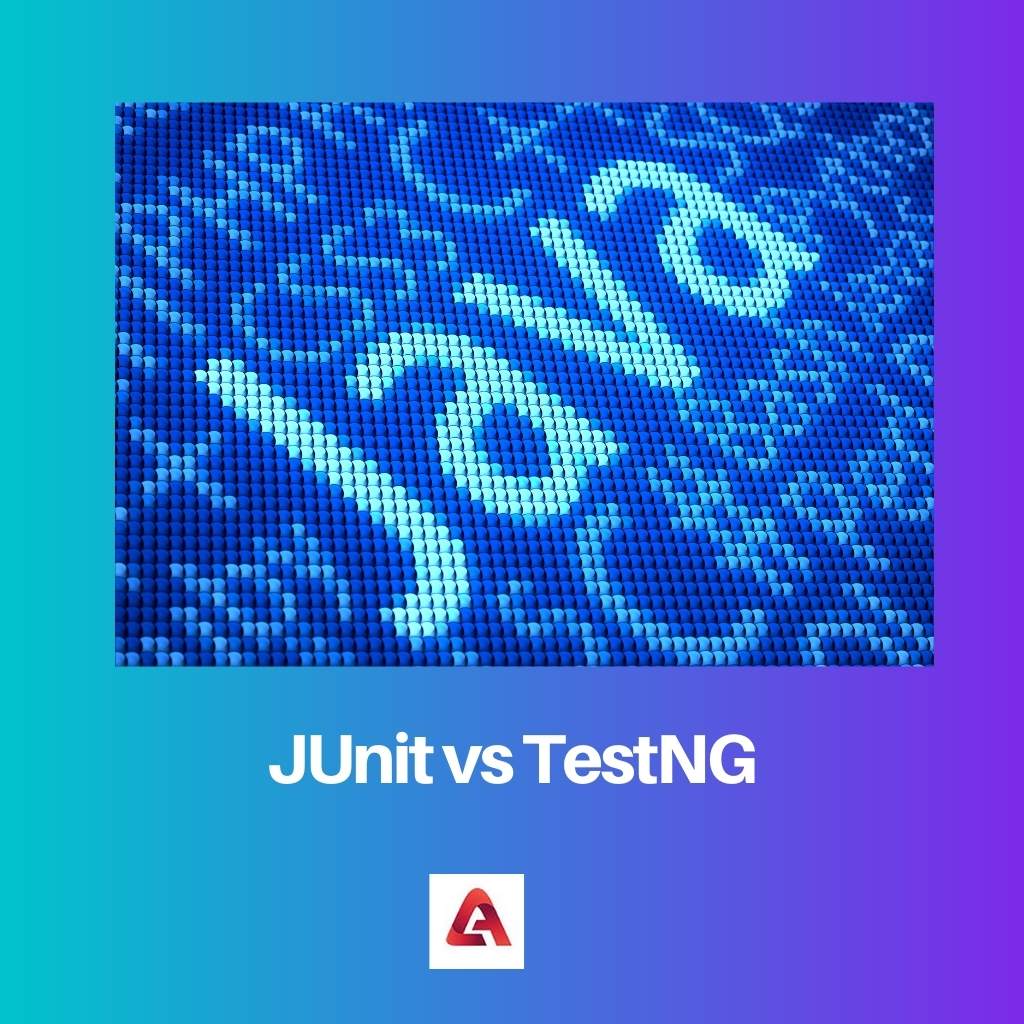There is no code without error because we humans create errors or mistakes. A legend should be tested for an excellent and error-free program before running it.
JUnit and TestNG are such platforms where one can do line-wise checking of their program, or checking can be done section-wise. These platforms help us to write an error-free program without wasting much time.
Key Takeaways
- JUnit is a unit testing framework for Java, while TestNG is a framework for Java that supports various types of testing, such as unit, functional, and integration testing.
- JUnit has a simpler annotation-based syntax than TestNG, which has a more powerful XML-based configuration.
- JUnit is more popular among developers due to its simplicity and ease of use, while testers prefer TestNG due to its flexibility and support for different testing types.
JUnit vs. TestNG
The difference between JUnit and TestNG is that JUnit is a platform for section-wise checking of code written in java, and it is an open-source platform. Whereas TestNG is not an open-source platform, and TestNG has more tools for testing purposes than JUnit.

JUnit is a tool that performs section-wise or unit testing in programs. Unit testing checks errors in a program section-wise, which means small parts of a program are limited accordingly.
TestNG is another java framework testing tool that does program testing section-wise. Cedric Beust made the testNG platform. It is not an open-source tool which means changes cannot be made to this tool.
Comparison Table
| Parameters of Comparison | JUnit | TestNG |
|---|---|---|
| Definition | JUnit is a tool that performs section-wise or unit testing in java programs. It is a Java framework. | TestNG is another java framework testing tool that does program testing section-wise. |
| Created by | Kent Beck and Erich Gamma made it. | Its creator is Cedric Beust. |
| Operating system | It is a cross-platform tool that can work on different operating platforms. | It is also a cross-platform tool and can work on different operating systems. |
| Parallel testing | JUnit does not support simultaneous or parallel testing. | TestNG fully supports simultaneous testing. |
| Annotation | It Does not assist annotation of a higher level, but this feature is supported in higher versions. | It assists all types of annotation and is flexible with all types. |
| Dependency | It does not contain a dependency-checking feature. | It includes dependency checking or testing. |
| Easiness | Working with JUnit is not that much easy, and dependency is needed. | Working with TestNG is easy, and configuration is also easy. |
What is JUnit?
JUnit platforms help us to check our code unit-wise. This tool can work on any platform-independent operating system. It is a java framework that does testing on programs that are written in java language.
JUnit has so many versions, and it has become more advanced. And because it is an open-source testing tool, many changes can be made, and more features can be added.
JUnit is an essential and recommended tool when it comes to testing programs that are written in java language. Annotation of higher level is not assisted by this tool. But the higher version of JUnit cahelpst with advanced annotation.

What is TestNG?
TestNG is preferred over JUnit because of its flexibility to new languages and ease of usage. Cedric Beust created it. Integration testing, Unit testing, and many more testing are supported by this tool.
TestNG supports a higher annotation level, making it a more usable tool. It is more potent than the JUnit platform. It wins over the drawbacks of the JUnit testing tool by doing parallel or simultaneous program testing.
TestNG saves a developer’s time by making the same class run multiple times on different codes. Dependency checking can be done quickly with this tool.

Main Differences Between JUnit and TestNG
- Cedric Beust created TestNG, while Kent Beck and Erich Gamma created JUnit.
- TestNG saves a developer’s time by making the same class run multiple times on different codes. But classes cannot be the same in JUnit for different tests conducted.
- https://ieeexplore.ieee.org/abstract/document/1383111/
- https://books.google.com/books?hl=en&lr=&id=bCvcMcLZwV4C&oi=fnd&pg=PT14&dq=testNG+testing&ots=86DCpNSPmB&sig=gBe875fBk44zyvD3ZNB8h5KUj9w

I like the detailed overview of TestNG.
Yes, that stood out for me too.
Agreed, quite insightful.
I appreciate the detailed definitions. Very helpful!
Well said! Valuable definitions indeed.
I wish there was more on practical applications.
I see your point. A practical approach would be good.
A few more examples would have been handy.
I concur, more examples would enrich the content.
Beautifully explained! Thank you!!
I agree! This was so informative.
Such an insightful take on the subject!
Interesting comparison of operating systems.
It was quite thought-provoking, wasn’t it?
Very much so, I found that particularly interesting.
Some more insights on JUnit could be beneficial.
Absolutely, more insights would add great value.
I second that, very useful information.
I think more real-life examples could be included.
I think so too. That would help readers relate better.
The comparison table is well-structured.
That made it easier to understand.
Indeed, such a well-presented table!
I found the section about JUnit quite helpful.
Ditto, I learned a lot.
It indeed added to my knowledge.